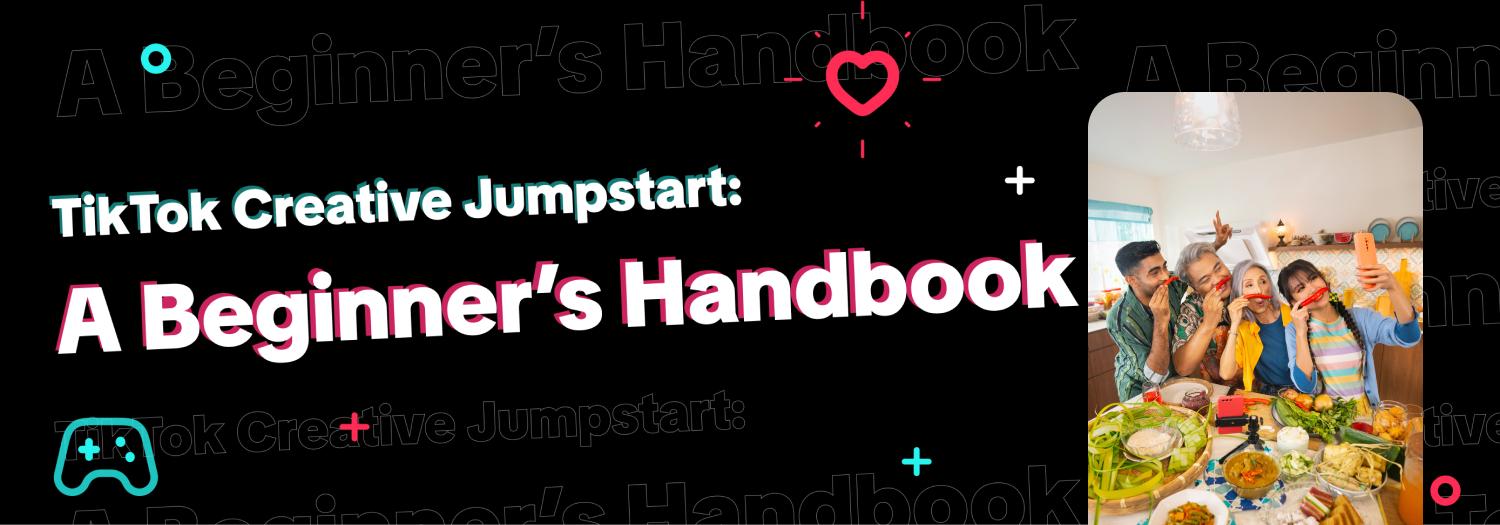
TikTok Creative Jumpstart: A Beginner's Handbook
The ultimate goal of your creative ads is to incentivize potential customers to take action -- ideally purchasing your product or service after being convinced by your creative ads.
In order to successfully build trust and trigger action, it's important to think through these questions:
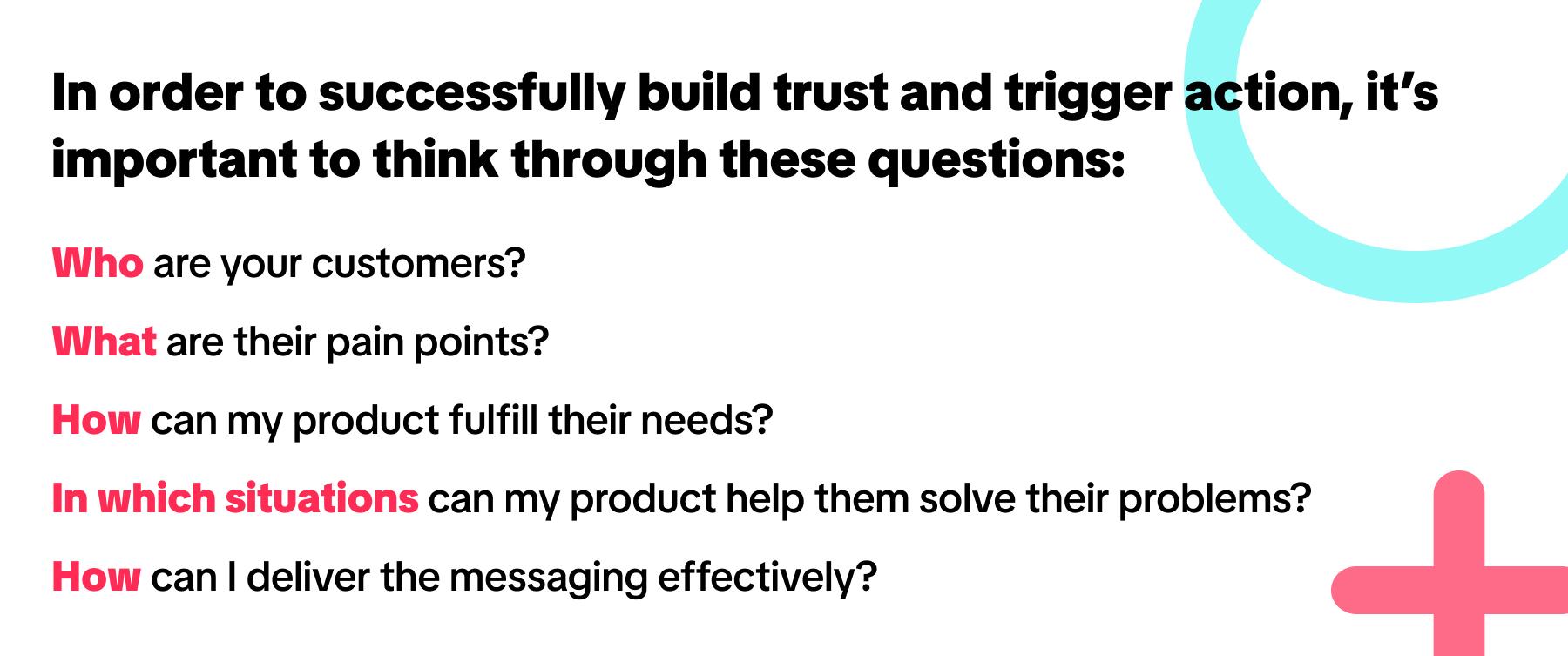
We'll go through the above questions in more detail below.
This playbook is structured into 3 parts:
1. Creative ads: Storytelling Factors
- How to highlight your product's selling points
- Think about your target audiences
- Think about the ideal usage scenarios
2. Creative ads: Fundamental Info
- Creative Quality & Video Dimension
- Creative Quantity & Diversity
3. Setting up your TikTok account
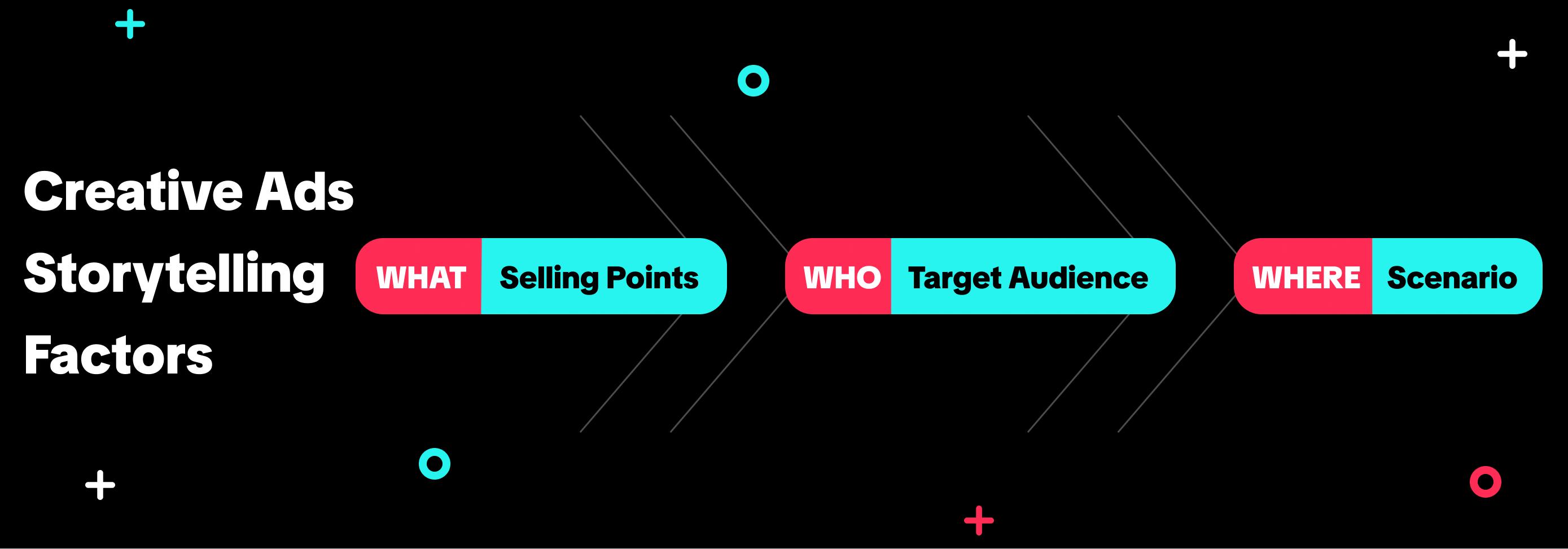
How to highlight your product's selling points
What is a selling point?
A selling point is a feature of a product/service that makes it attractive to potential customers. The main selling points and differentiators should be emphasized in your ads, so that potential customers are left with a solid understanding of how your product/service can fulfill their needs.
How can I define my product's selling points?

By answering the above questions, you can take big steps to identifying your product's selling points. Perhaps there are more than one. So if you have multiple selling points, should you show all of them in your creative ads? The answer is "no"! Let's talk about how to prioritize your selling points in your creative ads.
Find your USP and prioritize it in your creative ads. Unique selling point (or unique selling proposition) is an articulated benefit that your product/service has, that your competitors don't. Taking the list of selling points a step further, it should be something that makes your product/service truly unique. To find the USP of your product/service, you can list out all your selling points, and identify the one that best satisfies the questions listed above. You can think of it as the intersection between these circles:

Examples of selling point categories:
- Ingredients
- Material
- Quality
- Design
- Price
💡Tip: Pricing and promotional information can be a powerful selling point that encourages users to quickly purchase after they see an ad.
Identify Your Target Audiences
What is target audience?
A target audience is a select group of potential customers, who are likely to buy your product/service. Think about the common characteristics and pain points that they all share.
How to define your target audience
To define your target audience, think about the problems that your product or service can solve, and the kinds of people who might have or encounter these problems. This will become clearer after you've listed out your product selling points.
For example: if your product is an anti-aging facial moisturizer, your product's selling points could be: anti-aging, moisturizing, smooth texture, and reasonable price etc. Your target audience are people who have concerns about aging skin, which likely means age 30+, and those who have a limited budget to spend on skincare.
Content that's most likely to resonate with your target audiences:

Think of the ideal usage scenarios
Come up with the ideal scenarios in which your product/service would be used. For example, a fancy top for a special occasion, or sturdy snow boots for those who live in a cold place. By showing the various real-life usage scenarios in your ad, your audience can better visualize themselves using your product, boosting their demand and desire for your product.
Examples of scenarios:
- Location: home, beach, forest
- Season: spring, summer
- Holiday: Christmas, New Year
- Special occasion: wedding, birthday
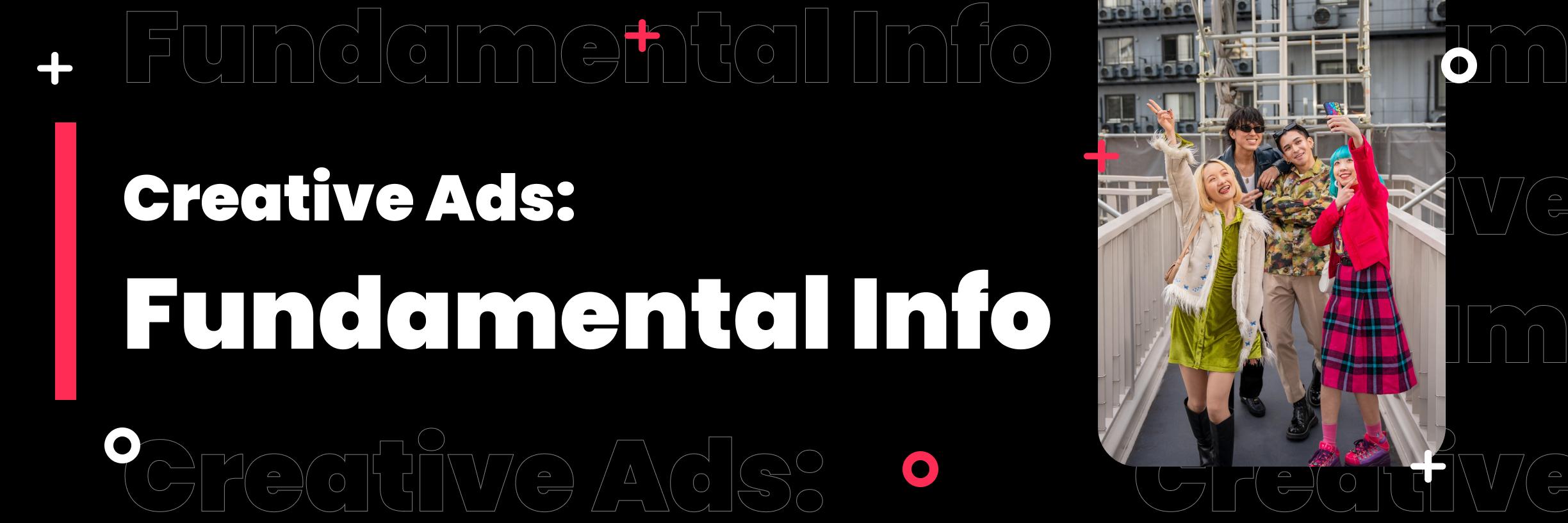
Look
- Go lo-fi for greater authenticity (avoid polished videos)
- Edit creative ads into TikTok style
This refers to compiling and editing your video with in-app features (i.e. leveraging filters, sound effects, text layers, etc.)
- Feature people (creators, employees, customers)
- Leverage sound for extra impact
Script
- Have a narrative or storyline
- Adopt category / vertical-specific norms and best practices
Creative Quality & Video Dimension
We've noticed that when advertisers stick to these formatting best practices below, performance and ROI of ad spend significantly increase:
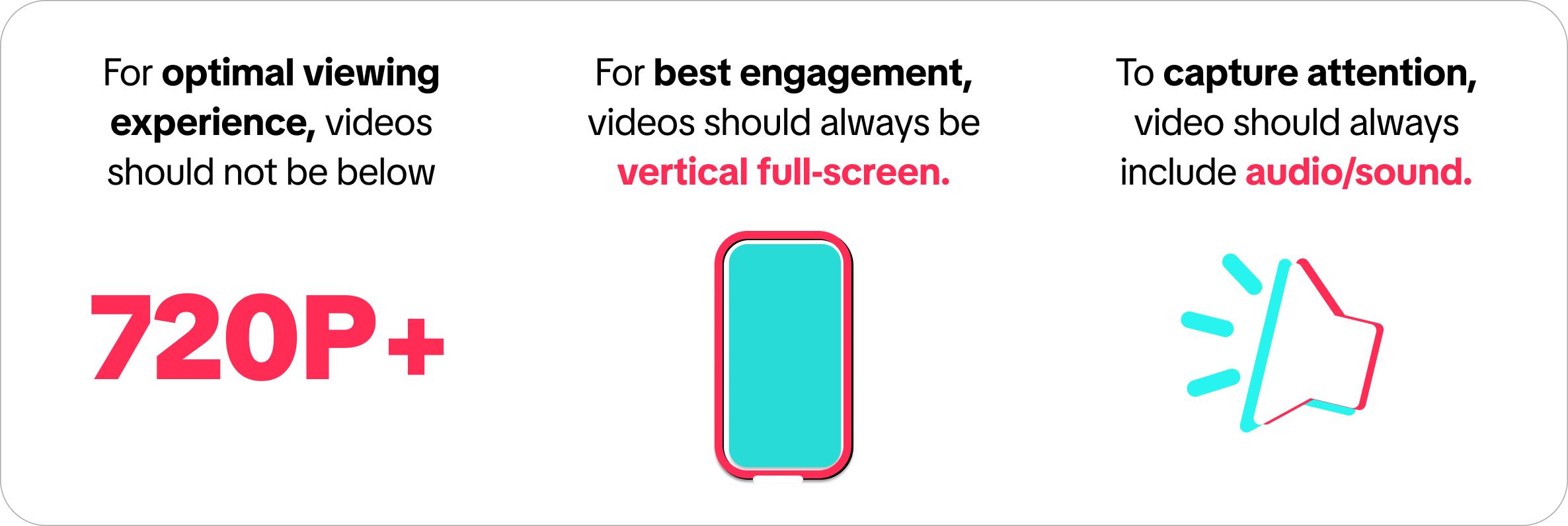
Creative Quantity & Diversity
- Running a high number of creative assets allows for better optimization of asset selection. We recommend spreading your creatives across multiple ad groups, with no less than 3-5 creatives per group. This helps you experiment and test, while allowing the system to learn what works best for you.
- Creative refresh frequency is the #1 factor that determines the lifespan of an ad group. Regularly refreshing and uploading new assets to your campaign works better than putting out too many creatives at the very beginning.
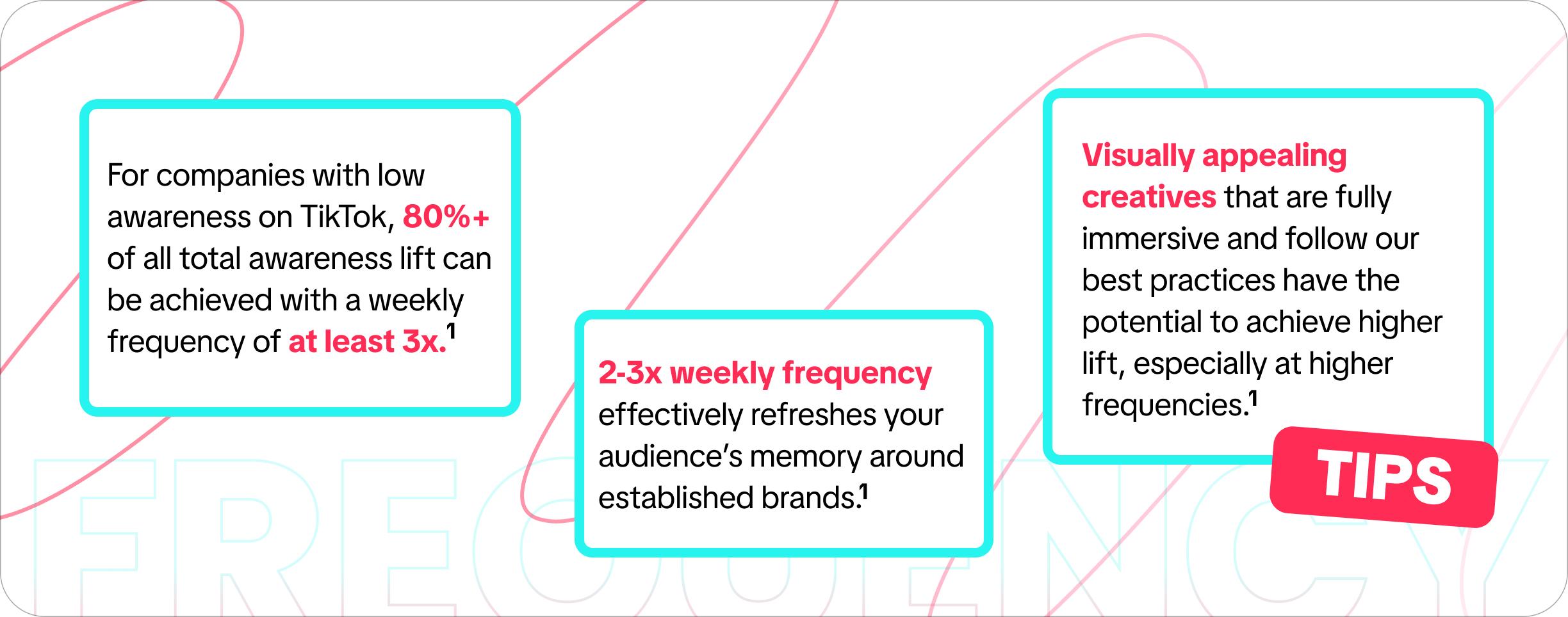
Let's get started! Here's how to set up your TikTok account:
Visit this link: https://www.tiktok.com/signup
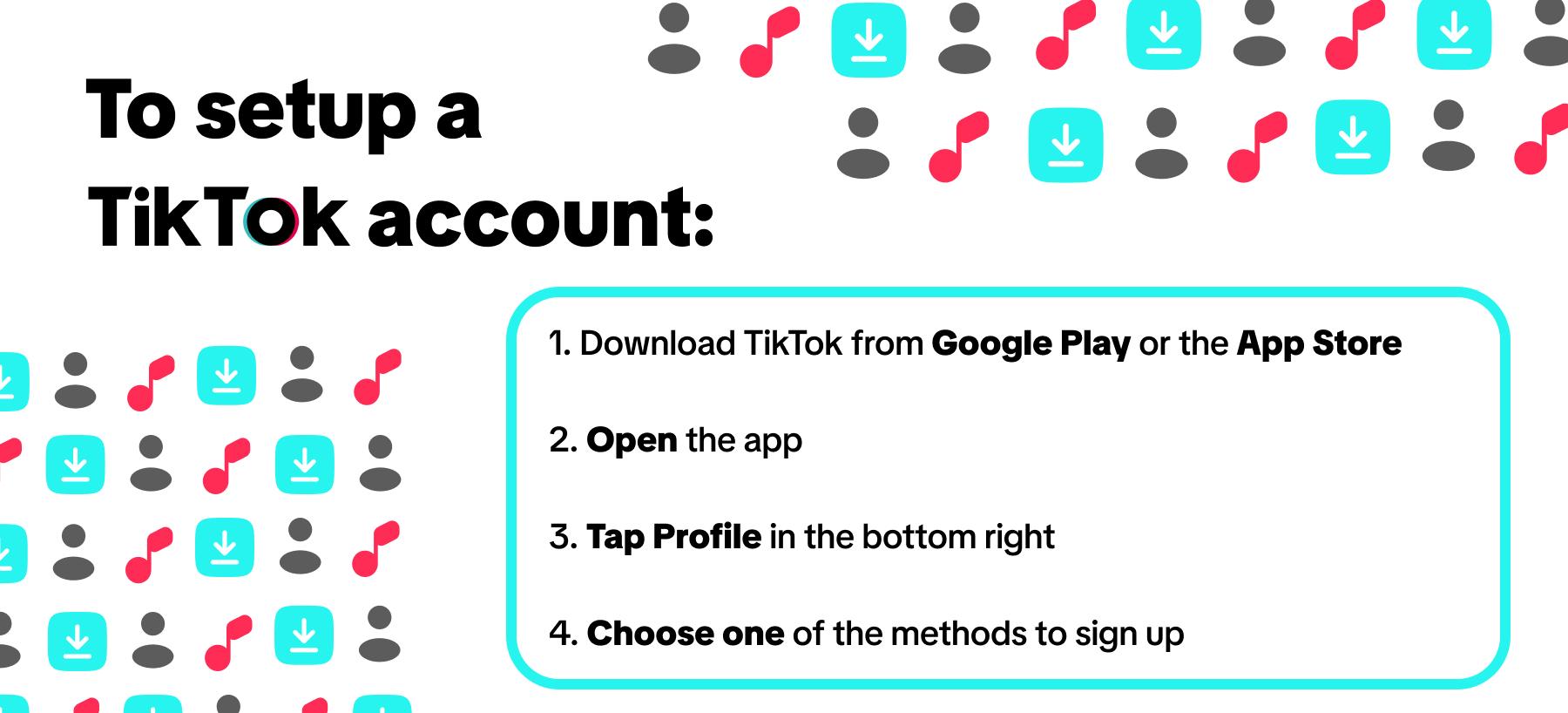
Note: Make sure your email and phone number are valid, as they are needed for log in and password recovery.
To add or change a profile photo or video:
- Tap Profile in the bottom right
- Tap Edit Profile
- Tap Change Photo or Change Video
- For photo, select Take a photo or Upload photo. For video, select from your gallery
Changing your nickname
A nickname on TikTok is the name on your account. Note that it this is usually different from your username. Your nickname is displayed in various areas on TikTok, including the For You feed, Friends tab, comments, and direct messages. All TikTok accounts require a nickname.
To change your nickname:
- In the TikTok app, tap Profile at the bottom
- Tap Edit profile
- Tap Name
- Enter your desired nickname. You can enter up to 30 characters. Keep in mind that nicknames must adhere to our Community Guidelines
- Tap Save
*Neither TikTok Inc. nor any of its affiliates, or its or their respective directors, officers, employees, or agents ("TikTok") make any representation or warranty, express or implied, in relation to the accuracy or completeness of the information contained in this document, and accepts no responsibility, obligation, or liability in relation to any of such information. TikTok expressly disclaims any and all liability which may be based on this document and any errors therein or omissions therefrom. TikTok undertakes no obligation or responsibility to update any of the information contained in this document. Past performance does not guarantee or predict future performance.
Source:
- TikTok Marketing Science, “Value of Frequency Planning of TikTok Ads“, 2021